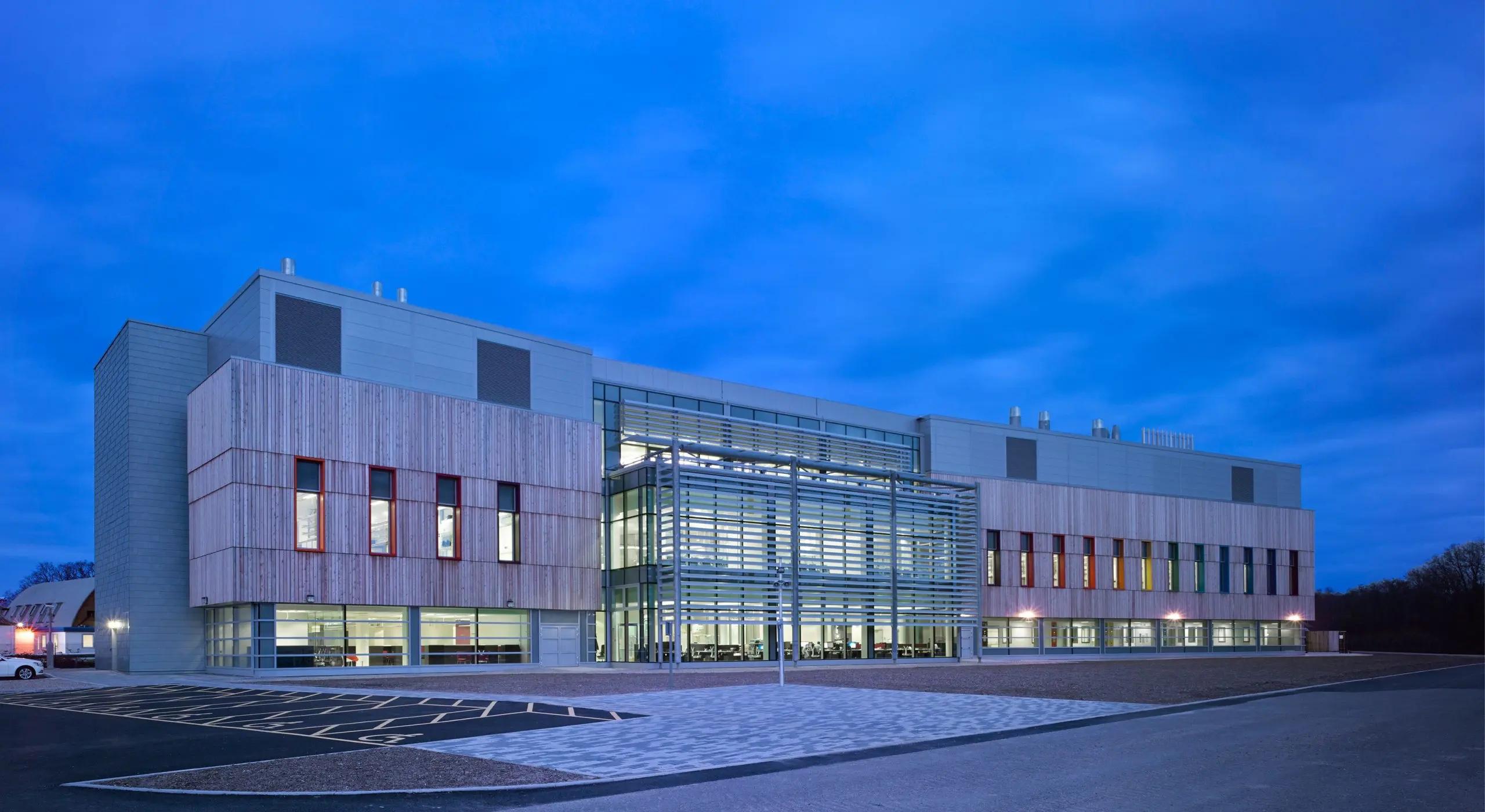The Pirbright Institute has been in existence for over 100 years.
The Institute first established as a cattle testing station for tuberculosis in 1914 and has developed over the years to become one of the UK's leading virus diagnostics and surveillance centres and is now also at the forefront of virus research.
The recent development of the site to incorporate a state-of-the-art high containment (SAPO 4) laboratory – the BBSRC National Virology Centre: The Plowright Building has enabled a unique combination of fundamental and applied research into pathogenic diseases with potentially devasting impact.
The Institute's achievements over the past century have been many and varied but throughout this time it has continued to play a pivotal role in controlling and preventing some of the world's most devastating diseases with the development of new and improved diagnostics and vaccines.
100 Years of Excellence
1914
Pirbright is established as a cattle testing station for tuberculosis.
1924
The cattle testing station becomes the Pirbright Experimental Station for the Foot-and-Mouth Disease Research Committee and research on the disease (FMD) begins with first experiments on large animals.
1933
Pirbright becomes the sole UK centre for research on foot-and-mouth disease.
1939
With the appointment of a full time Director of research, Pirbright is renamed the Foot-and-Mouth Disease Research Institute.
1952
First ultracentrifugation and purification of foot-and-mouth diseases particles.
1958
Pirbright is designated as the FAO World Reference Laboratory for Foot-and-Mouth disease virus (FMDV).
1963
The Institute is renamed the Animal Virus Research Institute and research begins into other viral diseases which are considered a threat to the UK including bluetongue, swine vesicular disease and rinderpest.
1967
Pirbright plays a major role in the control and eradication of a foot-and-mouth disease outbreak in the UK, the crisis led to the slaughter of 430,000 animals across more than 2,000 farms.
1969
Midge colonies are established at Pirbright for studies on viruses that are transmitted by insect vectors (such as bluetongue).
1980
A new vaccine for peste des petits ruminants, a highly contagious disease affecting goats and sheep, is developed and validated.
1986
The Institute of Animal Health is formed by bringing together The Animal Virus Research Institute at Pirbright, the Houghton Poultry Research Station in Cambridgeshire, the Neuropathogenesis Unit (NPU) in Edinburgh and the Institute for the Research on Animal Diseases at Compton (Berkshire). The NPU retains its name while the other three are known as the Compton, Houghton and Pirbright Laboratories.
1988
The NPU plays a vital role in the control in the UK epidemic of bovine spongiform encephalopathy (BSE).
1992
Houghton Laboratory is closed and all poultry research is moved to new facilities at Compton.
1994
Pirbright is designated as the FAO World Reference Laboratory for rinderpest.
1998
The structure of bluetongue virus is revealed through x-ray crystallography.
2001
Pirbright plays a vital role in the control of another major outbreak of foot-and-mouth disease in the UK. The 2001 crisis cost the UK economy an estimated £8 billion.
2007
The NPU becomes part of The Roslin Institute in Edinburgh. Pirbright substantially contributes to the eradication of bluetongue following an outbreak in the UK, saving the economy £485 million.
2010
Phase 1 of the redevelopment of the Pirbright site commences: construction of a new hi-containment (CL4) laboratory complex begins.
2011
FAO announces the global eradication of rinderpest in which Pirbright plays a major role, saving the African economy alone around £1 billion a year.
2012
Phase 2 of the Pirbright site redevelopment gets the green light from government: new lower containment laboratories (CL2) and a Biological Resources Facility (BRF). The Institute for Animal Health is renamed and rebranded The Pirbright Institute.
2013
A new type of FMDV vaccine is developed using synthetically produce protein shells of the virus. It is more stable than current vaccines and can also be produced outside of high bio-containment facilities as it does not contain live virus.
2014
The construction phase of the new high containment laboratories the BBSRC National Virology Centre: The Plowright Building is completed on time and on budget and is opened by the then Secretary of State for BIS Vince Cable in October. Work begins on the lower containment laboratories.
2015
The Institute celebrated the move into the BBSRC National Virology Centre, a consolidation of research from two sites (one at Compton in Berkshire) to one at Pirbright and significant steps forward in the development of vaccines against diseases such as foot-and-mouth, African swine fever and swine influenza. New world-class facilities attract eminent researchers from around the globe to continue our mission of excellent research and surveillance of viral diseases of farm animals and viruses that spread from animals to humans.


